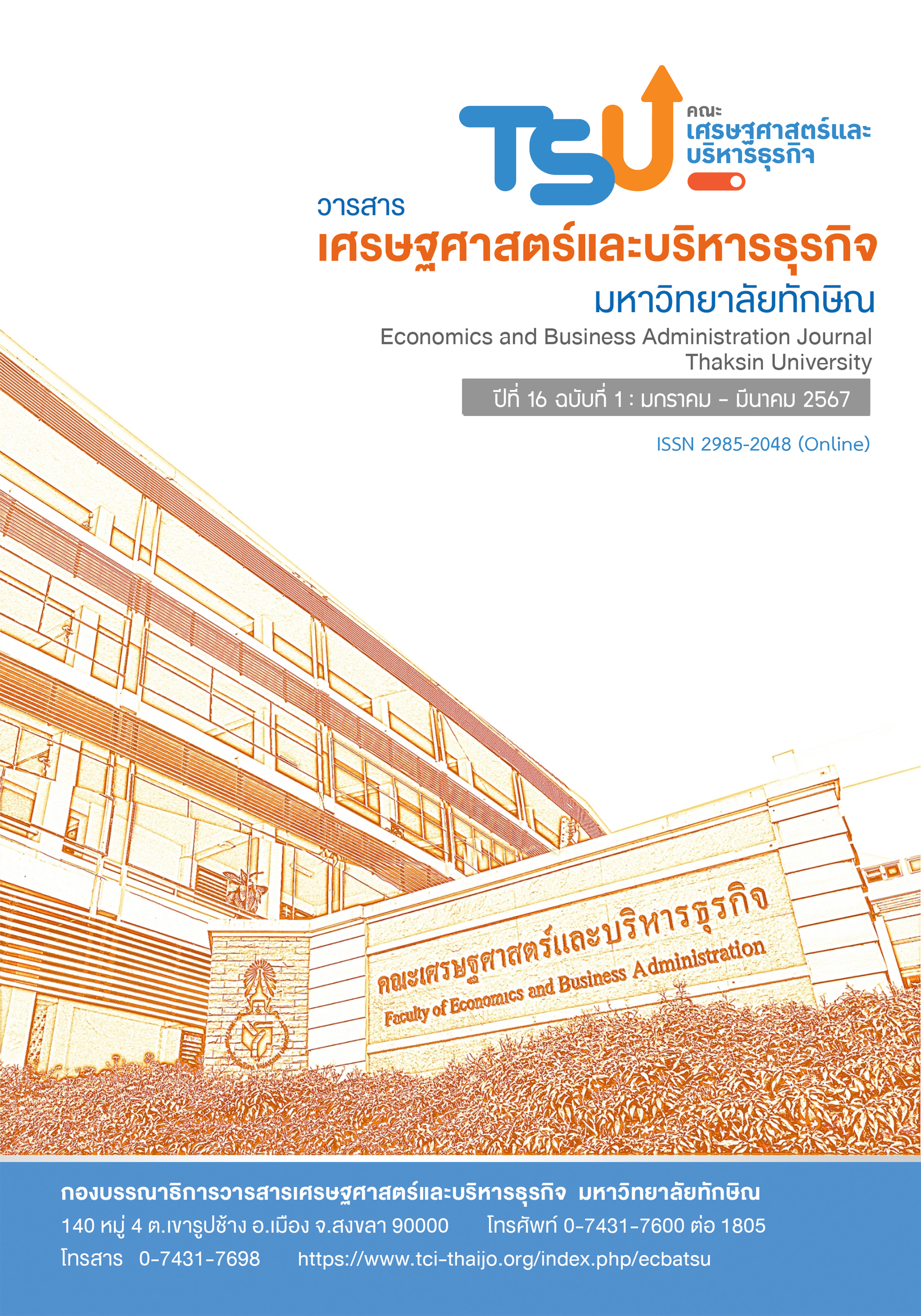Capability Development According to Employee Personality from Myers-Briggs Type Indicator (MBTI): A Case Study of Thai Rung Union Car Public Company Limited
DOI:
https://doi.org/10.55164/ecbajournal.v16i1.262264Keywords:
Capacity Development, Personality Types, Myers-BriggsAbstract
This research aimed 1) To study the personality of employees in Thai Rung Union Car Public Company Limited according to the Myers-Briggs Type Indicator (MBTI). 2) To study the personality of the employees that med the needs of each division in the company. 3) To study the capability development and retention regarding to the personality of employees. Thai Rung Union Car’s population was 819 employees. The researcher could collect data for 215 people, which was 82.69% closing to the specified sample group that were 260 persons. Research tools was a personality test and the Company's personality needs interviewed. Data were analyzed using descriptive statistics such as frequency values and descriptive data analysis.
The results showed that 1) The company recruited most of their officers who normally solve the problems by using a reason rather than a feeling. Most of them were decisive and punctual. (Myers, Isabel B.; Myers, Peter B.,1995) Therefore, the majority of their officers regarding to Myers-Briggs Type Indicator (MBTI) were in the Company. 2) When comparing the results of employee personalities studied with the needs of each department in the company, it was found that the OEM Sales and Marketing Department and the Research and Development department respondents did not have personalities in line with each department, business segment. Accounting and Finance, there were 22 people that had personalities matching with their departments. Human Resource management department, there were 19 people with personalities that meet the skills needed. The Industrial and Engineering department, there were 2 people who had skills that meet the needs. 3) The results of the study on the capability development along with the personality type found that most of the employees were good at administrative skills. Thus, trainings and developments should focus on training appropriately to individual skills and to support administrative abilities and career paths in the future. By using personality type tests integrated to career analysis, the company could plan for capability improvements for each of business segments. That was congruent to how to increase capability. (Pisanbudd, 2016) Capability could have inborn or could be improved by trainings. (Indrarakamheng, 2019) In order to improve that efficiently, the company should start since recruiting, training, learning by doing, and to the job motivations. Also congruent to one factor of Herzberg’s Two-Factor Theory, in term of positive thinking buildings and true motivations was the company advancement or possibility of growth. (Sereerat, 2007) Visibly, Training Management could support works efficiency and could achieve the objectives of Thai Rung Union Car Public Company Limited
References
Aonchaviang, D.,(2021). Increasing the Potential of Manpower in the Eastern Special Development Zone. Academic Journal of the Institute for Manpower Development in the Eastern Special Development Zone. 1(2), 7-26.
Hattasak, M., & Itthipatanan, S.,(2002). A Study of the Personality of Bangkok University Students According to the Myers Briggs Personality Scale (MBTI). Retrieved from https://www.bu.ac.th/knowledgecenter/epaper/jan_june2004/ manasanan.pdf
Holland, J. L. (1961). The Psychology of Vocational Choice, a Theory of Personality Types and Model Environments. Mass: Blasdell.
Indarakamheng, A., Tantiwiwat S., Chawanovanitch J., Prasitthichoke P., & Jantasiri Y., (2019) Factors for Success and Guidelines for Quality Manpower Development. Journal of Behavioral Sciences. 25(2), 152–170.
Jung, C. G. (1939) The Integration of The Personality. N.Y.: Ferrar and Rinehart.
Kaplan, R. S., & Norton, D. P. (1992). The Balanced Scorecard; Measures that Drive Performance, Harvard Business Review.
McClelland, D.C. (1973). Testing for Competence Rather than for Intelligence. American Psychologist, 28, 1-14.
McGregor, D. (1960). The Human Side of Enterprise. New York: McGraw–Hill Book Company, Inc
Myers, I. B., & Myers, P. B. (1995). Gifts Differing: Understanding Personality Type. Mountain View. CA: Davies-Black Publishing.
Northouse, P. (2004). Leadership Theory and Practice. Thousand Oaks, CA: Sage Publications.
Pisalputra, P., Khongklai, J., & Kittisaknavin, C., (2016) Guidelines for Increasing Organizational Competency in Human Resource Competency Development, 9(1), 1315-1326.
Stott, K., & Walker, A. (1995). Teams Teamwork & Teambuilding. Singapore: Prentice- Hall. Synder.
Tangen, S. (2003). Evaluation and Revision of Performance Measurement Systems. Research Project Description in: Work Packages, Proceed-ings of the Proper Scientific Advisory Group meeting. (December 10-12) Gothenburg, Sweden.
Tangen, S. (2004). Performance Measurement: from Philosophy to Practice. International Journal of Productivity and Performance Management, 53(8), 726-737.
Theerawekin, N., (1997). Personality Theory and Adaptation. Bangkok : Thammasat University.
Thongjuea, T., & Thummek, P. (2017) Human Resource Development Guidelines in the 21st Century in Education Dimension. Journal of Peace Studies Review MCU 5(3), 389-403.
Downloads
Published
How to Cite
Issue
Section
License
Copyright (c) 2024 Faculty of Economics and Business Administration, Thaksin University

This work is licensed under a Creative Commons Attribution-NonCommercial-NoDerivatives 4.0 International License.




